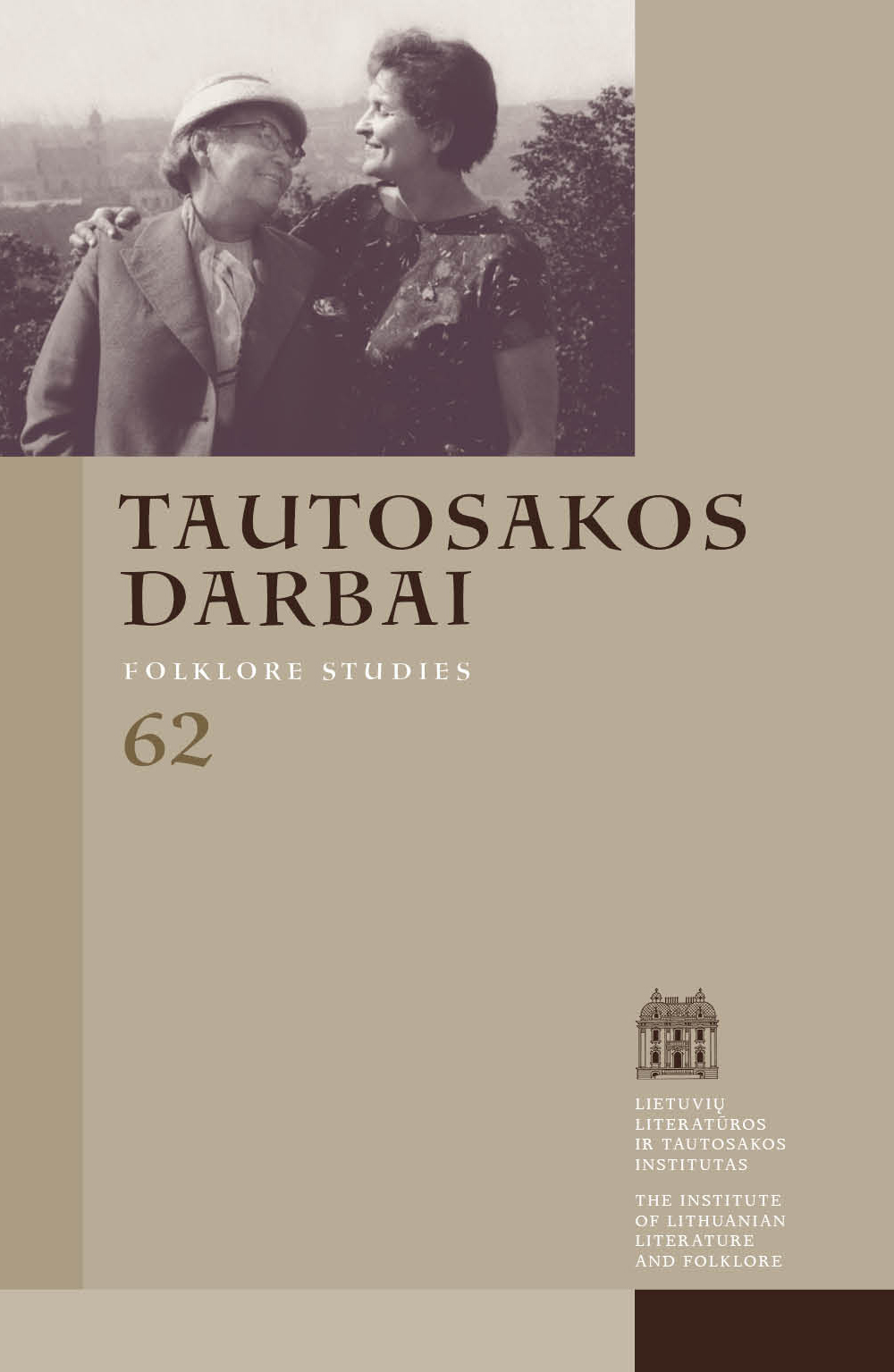Children’s Tales in the Traditional Lithuanian Culture: Purpose of Cruel Elements
Abstract
Cruelty and violence as depicted in tales are directly related to the mythical fears that children experience while listening to the story. Although brutal actions and lethal violence abound in folk-legends as well, their characters experience these things in a different way. In folkbelief legends, principles of mythical world apply. Brutality that mythical beings direct at the humans is most frequently caused by breaking of certain mythical and social rules. Cruelty and violence depicted in tales, however, are characterized by another kind of logic, which is different from that of the folk-belief legends.
The purpose of this article is revealing those several aspects that characterize functioning of the children’s tales in the traditional Lithuanian culture: namely, the storytelling environment, the elements of cruelty and violence employed by the tales, and the impact of these elements on the children’s fears experienced when listening to the narrative. The scope of analysis includes the traditional Lithuanian culture from the end of the 19th to the first half of the 20th century. Both archived and printed sources describing the storytelling environment of that period are employed.
The analysis of the storytelling environment in the article particularly elucidates the following aspects: the importance of the storyteller and his / her individual features, the changes in the tales’ repertoire taking place from the end of the 19th to the first half of the 20th century, the time allotted to the storytelling, and certain peculiarities of the children’s tales, including adaptations according to the tale types and children’s age.
Discussion of the cruel and violent elements of the tales starts with introducing relevant attitudes to this issue by two outstanding folklore researchers: Lutz Röhrich and Bronislava Kerbelytė. Following the classification of cruel and violent elements devised by Röhrich, two most frequent tale motives are discussed in detail – namely, cannibalism and brutal punishments. Tales are usually expected to have a happy ending, but it is not always the case. In terms of cruel and violent motives and fear experienced while listening to the story, one exceptional group of the tales is especially important – namely, those without a happy ending.
Besides, the issue related to mitigating the tales is raised, including neutralizing of the uneasy motives and replacing the unhappy endings with happy ones.
Materials depicting the storytelling environment are sparse both in the archives and in the printed sources; however, they allow highlighting the fear experienced by the children in the traditional Lithuanian culture while listening to the tales, and emphasizing that such experiences held certain fascination to them. The author also questions the meaning of the fear that was thus experienced. According to the available data, three important aspects can be discerned: first, these experiences functioned as means of folk pedagogics and didactics; second, sometimes provoking intense emotional experience was desired; and third, the tension-inducing narratives could be means of neutralizing the children’s anxiety and fear. The latter purpose of telling cruel and violent tales is confirmed by two different scholarly approaches employed by researchers working on the issues of tales and fears: namely, the
psychological (represented by Marie-Louise von Franz and Bruno Bettelheim) and the folkloristic one (by Alan Dundes and Lutz Röhrich).
Downloads
Most read articles by the same author(s)
- Vita Džekčioriūtė-Medeišienė, Mythical Notion of Mushrooms in Lithuanian Culture , Tautosakos darbai: Vol. 52 (2016)
- Vita Džekčioriūtė-Medeišienė, Mythical Notion of the Children’s Diseases and Their Liminal Expression in the Traditional Lithuanian Worldview , Tautosakos darbai: Vol. 64 (2022)
- Jurga Sadauskienė, Austė Nakienė, Rytis Ambrazevičius, Asta Skujytė-Razmienė, Radvilė Racėnaitė, Gražina Kadžytė, Modesta Liugaitė-Černiauskienė, Vita Džekčioriūtė-Medeišienė, Eligija Garšvienė, Chronicle , Tautosakos darbai: Vol. 54 (2017)
- Austė Nakienė, Daiva Vaitkevičienė, Vita Džekčioriūtė-Medeišienė, Gražina Kadžytė, Aurimas Bačiulis, Vida Savoniakaitė, Lina Būgienė, Chronicle , Tautosakos darbai: Vol. 55 (2018)
- Rūta Žarskienė, Inga Vidugirytė, Asta Skujytė-Razmienė, Gražina Kadžytė, Lina Leparskienė, Vita Džekčioriūtė-Medeišienė, Dalia Zaikauskienė, Chronicle , Tautosakos darbai: Vol. 58 (2019)
- Jūratė Šlekonytė, Asta Skujytė-Razmienė, Gražina Kadžytė, Austė Nakienė, Vita Džekčioriūtė-Medeišienė, Chronicle , Tautosakos darbai: Vol. 56 (2018)
- Austė Nakienė, Beata Baublinksienė, Aušra Žičkienė, Audronė Gedžiūtė, Vita Džekčioriūtė-Medeišienė, Chronicle , Tautosakos darbai: Vol. 60 (2020)
- Vita Džekčioriūtė-Medeišienė, Scaring of Children in the Traditional Lithuanian Worldview , Tautosakos darbai: Vol. 51 (2016)
